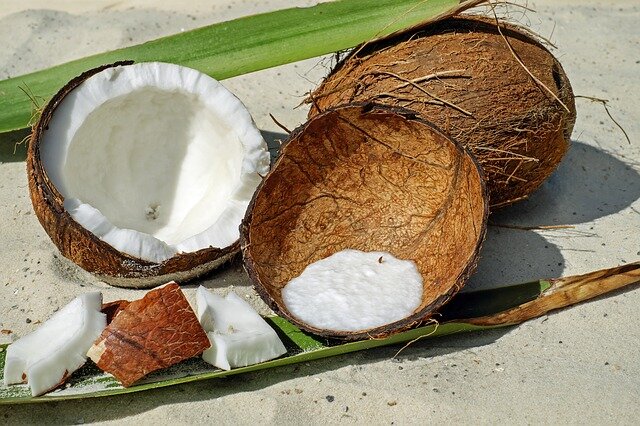Put The Lime in the Coconut... or Lemon, or Tea Tree...
She put the lime in the coconut… actually she put the tea tree in the coconut. And lemon. And lavender. And by she I mean me... Let’s talk carrier oils! Carry on my wayward coconut!! I’ll start with coconut since it was the first carrier oil I used in my healthy living journey, from cooking to skincare and personal hygiene.
Once I learned that coconut oil was fat burning I thought I would replace olive oil when cooking. Now it’s something I prefer to use in clean baking and for roasting vegetables. Every oil has its place in the kitchen and I have found my personal preference for coconut oil.
It wasn’t until about a year after that I started learning about coconut oil for skincare. As a beginner I was only using pure coconut oil for moisturizer. It took some trial and error for me to see what worked best for my skin. Some say coconut is acne fighting, however since it’s a saturated fat it easily absorbs into the skin and may clog your pores if you have oily prone skin. Again all of our body chemistry is different and some experimentation comes into play to find the best options for you. I came up with a blend, a body butter if you will, that I have tweaked and updated as I’ve learned new things. I feel I have finally perfected it for me personally, and I do change the recipe based on time of year and weather. Don’t worry… I’ll share the recipe.
There are two ways to use coconut as a carrier oil. The first is unrefined coconut which will have a solid creamy texture when kept at room temperature. In order to melt it down to add essential oils, always use indirect heat.
You can put a glass jar in warm (not boiling) water, set a glass jar on top of your stove while baking something, or set up a double boiler system, if you want to get fancy. For a double boiler, add a few inches of water to a saucepan and bring to a boil. Then place a glass bowl that fits snugly on top without touching the water. You can evenly melt the coconut oil this way and remove it immediately before it gets too warm. Unrefined coconut oil is great for creating lotions, butters, chapstick, and soaps.
The second is fractionated coconut oil. This means some of the fatty acids have been removed so it stays liquid at room temperature. This is best used for basic blends and for those with more acne prone skin. By removing some of the fatty acids the oil is more emollient and less pore clogging. It also never goes rancid so it’s great to add to other blends to preserve the shelf life.
Either form you choose, coconut oil is rich in vitamin E, has antibacterial and antifungal properties, and aids in skin repair such as stretch marks and scarring. It is great for tooth health as well. Oil pulling with coconut oil whitens teeth, strengthens enamel, and can aid in cavity repair.

















